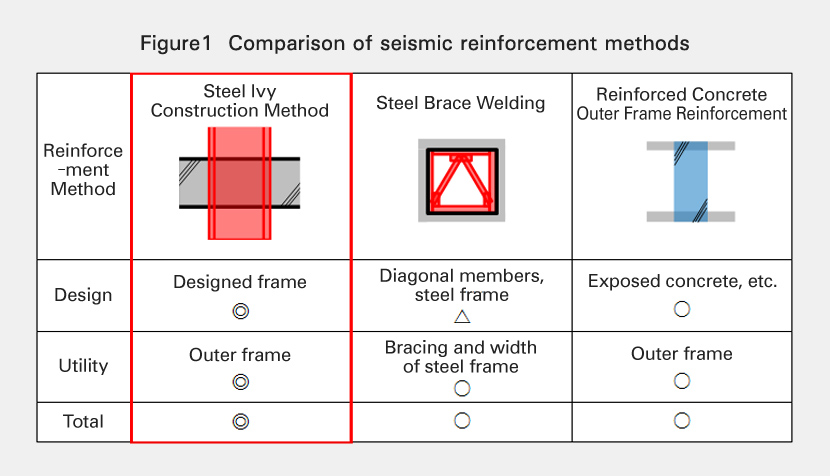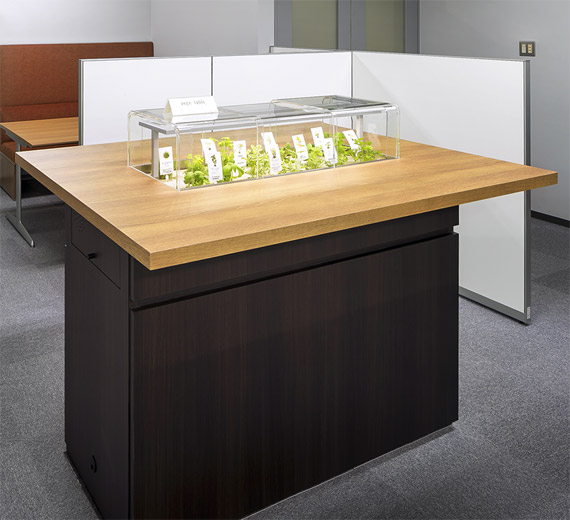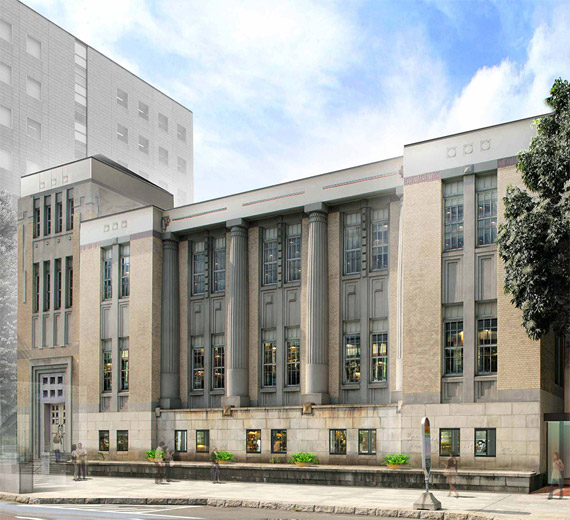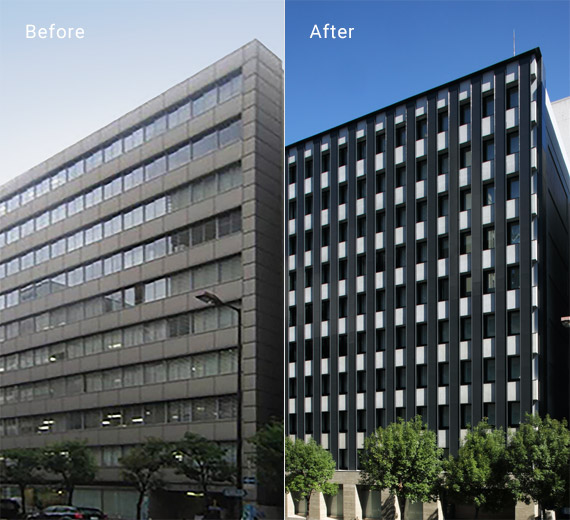
The 10 story Nikke Yotsubashi rental building in Osaka was built in 1973 in compliance with the seismic codes of the time. Takenaka rebuilt the building using its square-type Steel Ivy construction method. It’s stronger, more beautiful and its value as real estate has been enhanced.

Before Construction

After Construction
In Japan, especially, rental buildings have to be able to stand up to even large earthquakes. To make this building more attractive to rentiers, the client prioritized seismic reinforcement.
The Steel Ivy method made a lot sense, not only in terms of BCP* but since the building faced a main street and needed an attractive exterior, which this method facilitated. The client operated a textile business so the first floor façade was stylishly textured, and above, the window panels suggest the warp and weft of woven cloth, subtly communicating the strength of the building.
BCP (Business Continuity Planning)
Business Continuity Planning refers to contingency plans for any and all events that might interrupt the continuity of a business and its operations. From the point of view of architecture, this means strategies to minimize recovery times for the building in the case of seismic events and similar environmental disasters, and to minimize risk when resuming operations.

Technological Outline

In this construction method, a reinforcing (reinforced concrete) beam is connected to the exterior of the existing structure (beam) and a reinforcing steel column is set up further outside to create strong outer frame. (Figure 1)
Compared to other seismic reinforcement construction methods, there are two advantages to this method:
- ①Seismic performance can be enhanced along with the attractiveness of the exterior design.
- ②Since the construction is external, there is little effect on the usability of the interior. Nor is there much interference with the surroundings. So the building can continue operating.

The decision as to which construction method should be used is based on research into the building’s seismic performance and its current condition.
In Japan the Nankai and Tonankai earthquakes have generated considerable anxiety about the effects of large seismic events in the future. So there is a feeling that time cannot be wasted in improving the seismic performance of buildings build to older codes. The Steel Ivy method has proven performance. Buildings strengthened using it can expect shorter and simpler evaluations, which reduce construction times and improve safety.
Project Outline
| Project Name | Nikke Yotsubashi Building |
|---|---|
| Owner | Japan Wool Textile Co., Ltd. |
| Usage | Rental office |
| Number of Floors | 10 Fl. above, 3 Fl. rooftop structure |
| Site Area | 883.53㎡ |
| Total Floor Area | 7,523.92㎡ |
| Maximum Height | GL+31.59m(excluding the rooftop structure) |
| Structure Type | Reinforced concrete structure, pile foundation |




